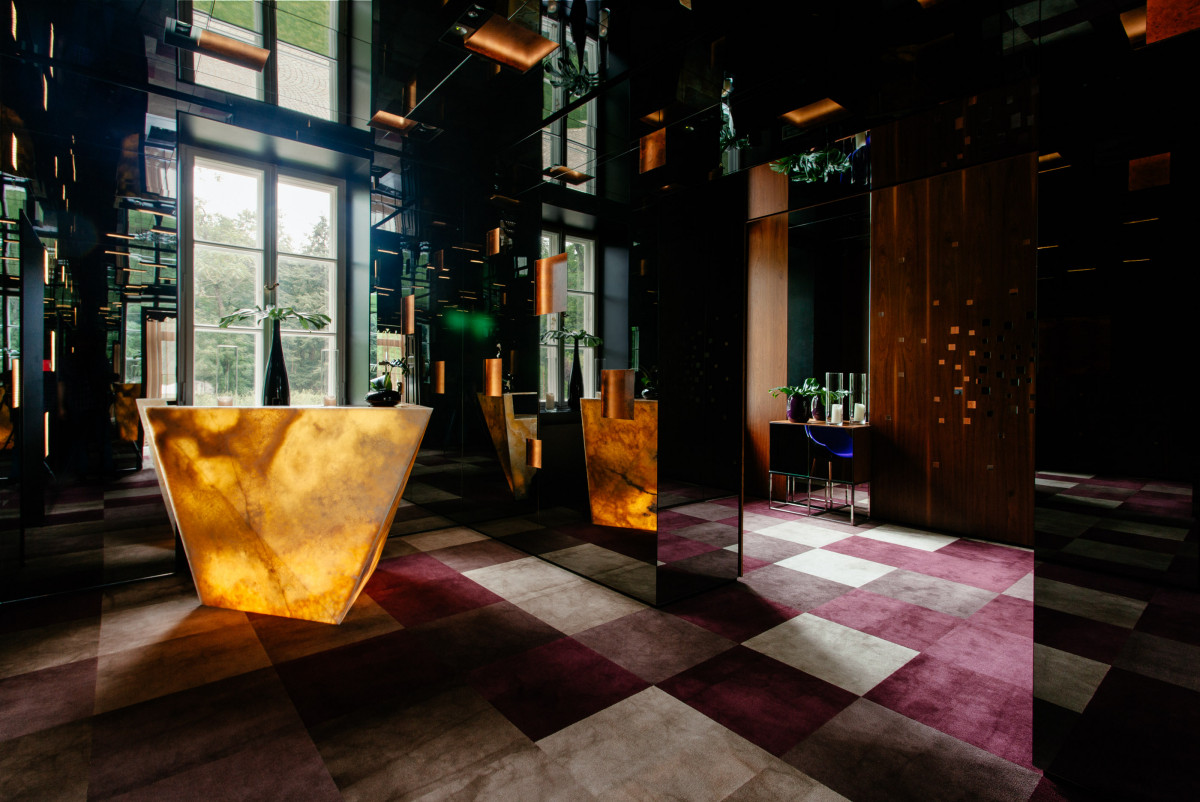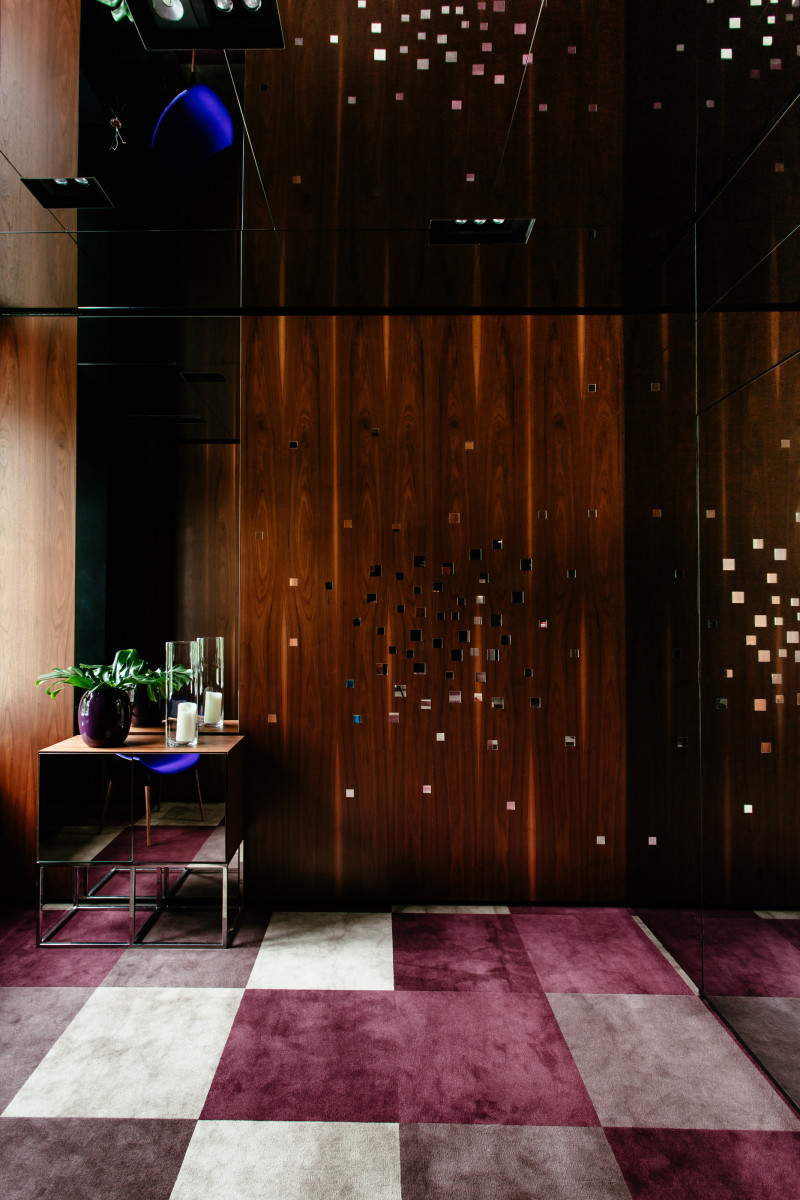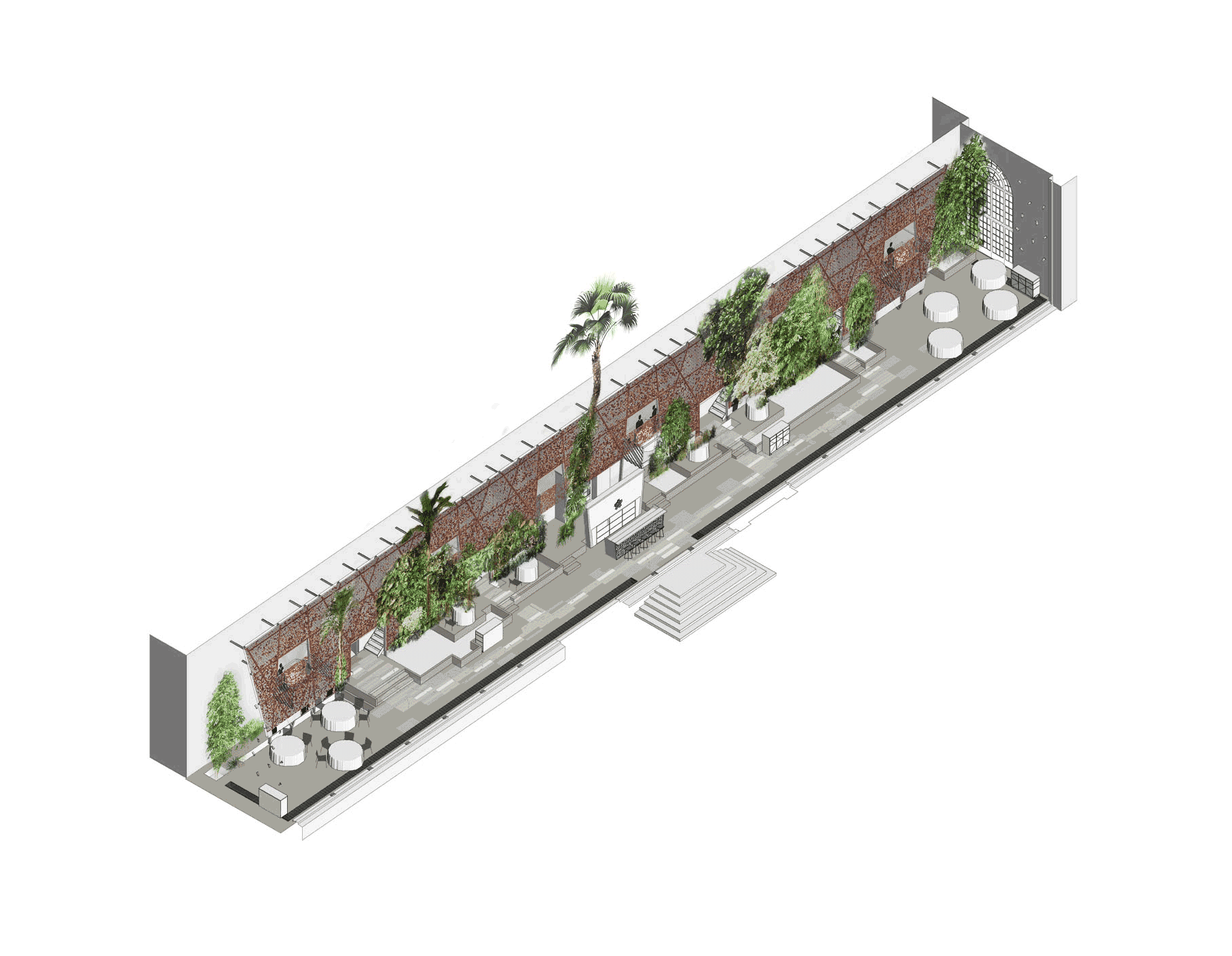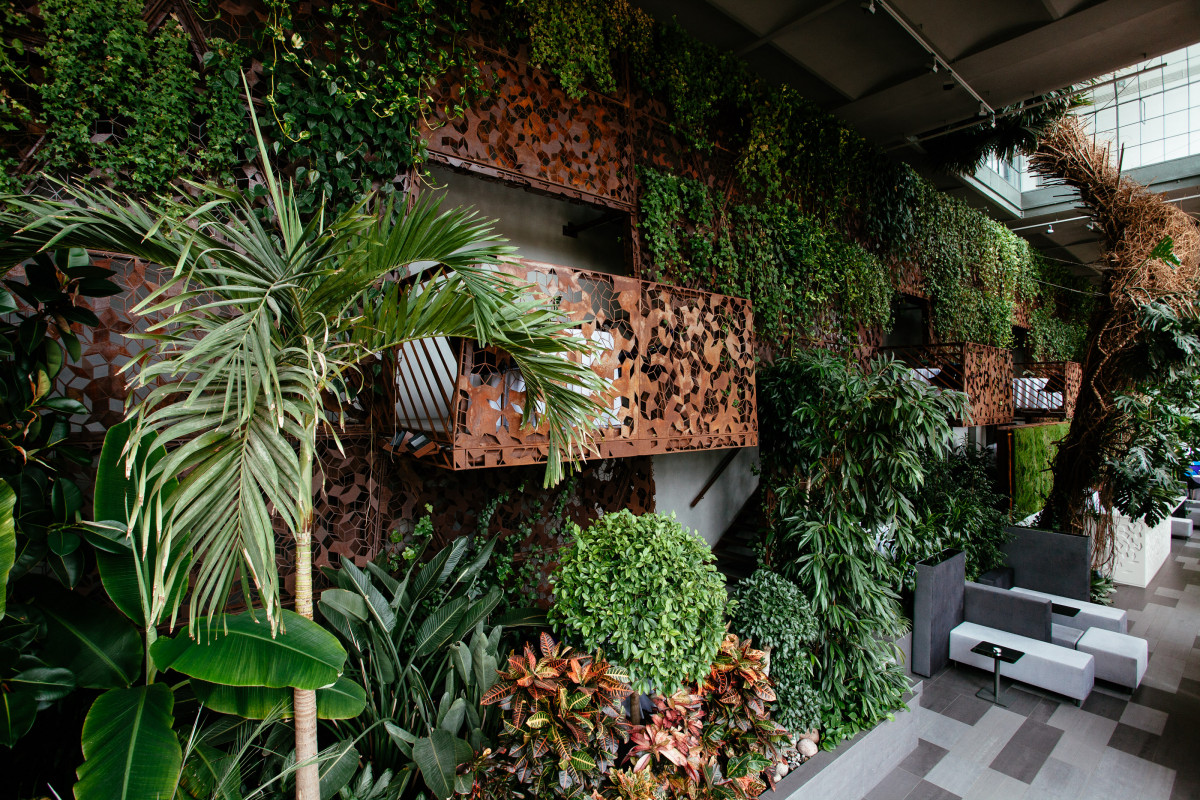
Belvedere Restaurant
Design: 2012
Construction: 2014
Location: The Royal Łazienki Museum in Warsaw, The New Orangery
Team: Boris Kudliĉka, Natalia Paszkowska, Marcin Mostafa, Jolanta Szybiak, Dorota Wilczyńska
Cooperation: Mateusz Morski, Małgorzata Niedzielska, Michał Bartnicki
Landscape Design: Abies – Landscape Architecture Barbara Kraus Galińska
Photos: Rafał Kłos
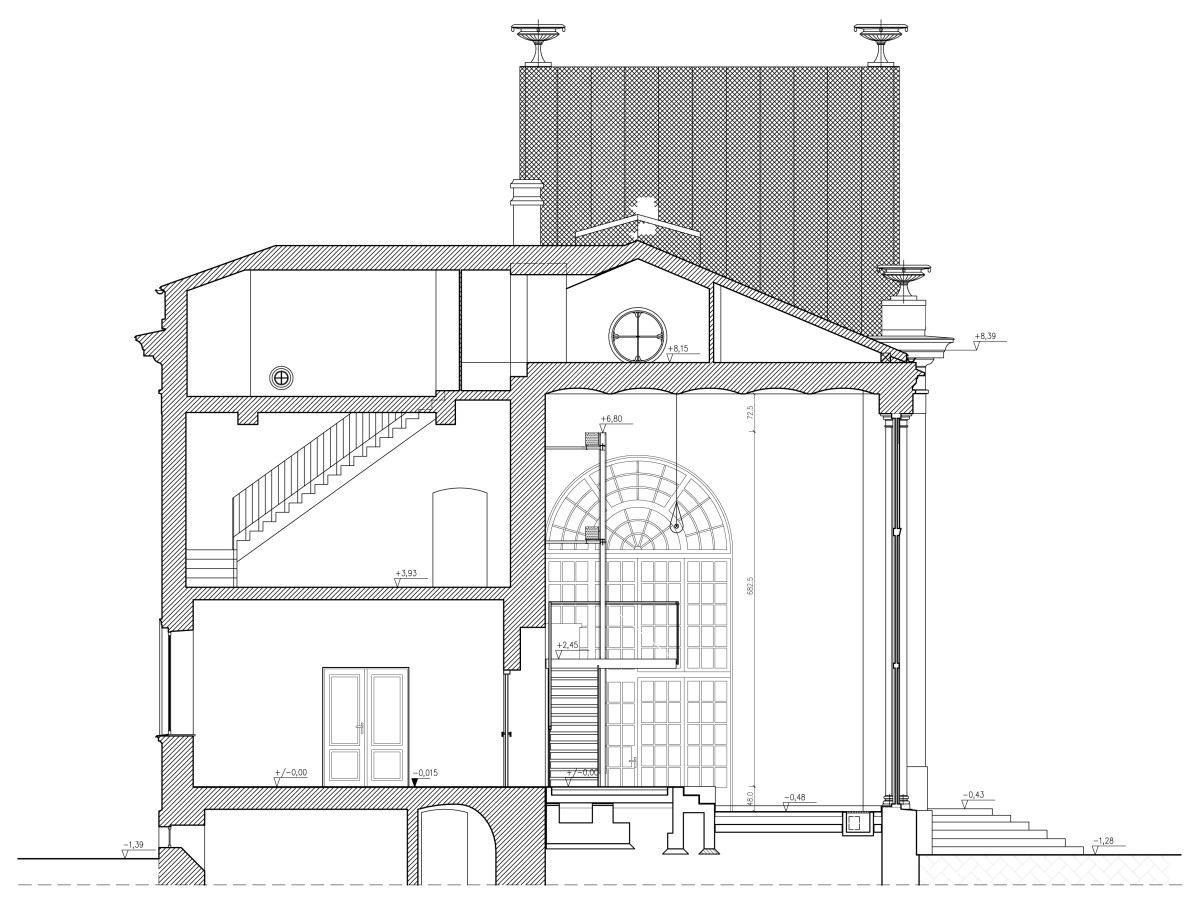
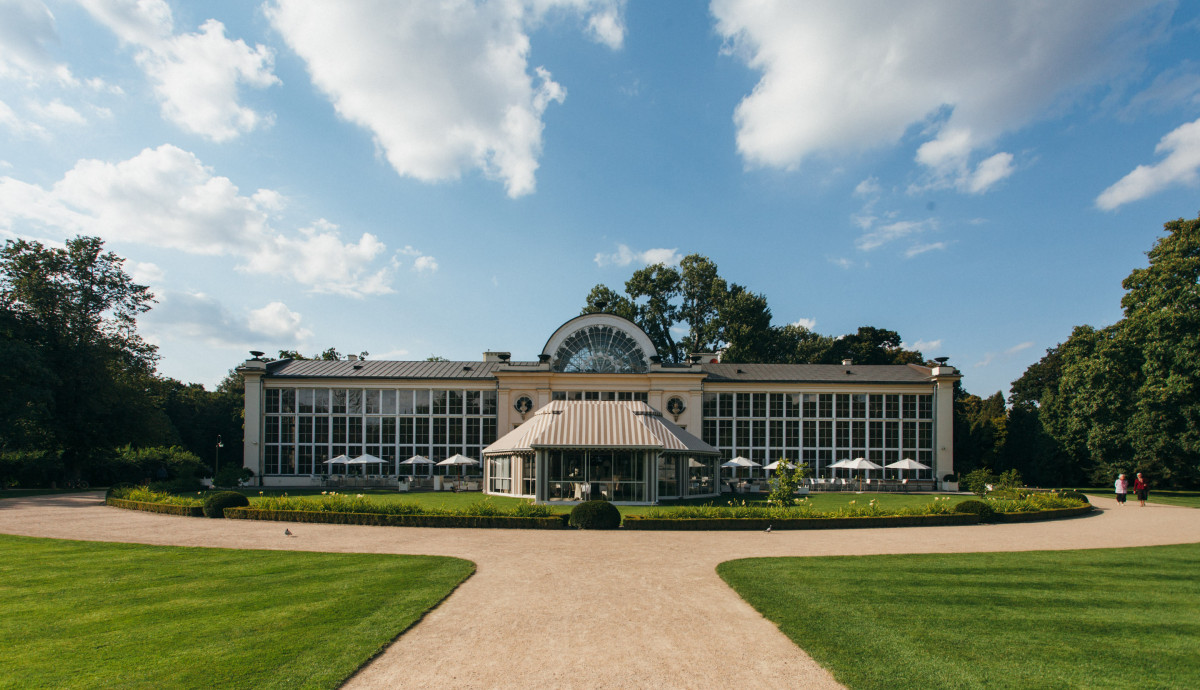

The interior of The New Orangery, a 160-year-old building situated in The Royal Łazienki Museum complex in Warsaw, is a space combining the function of a palm house with its collection of exotic plants with that of Belvedere Restaurant which within the last few years has become its integral part. An important design objective of this project was finding a compromise in the way these two different functions will relate to each other in one space.



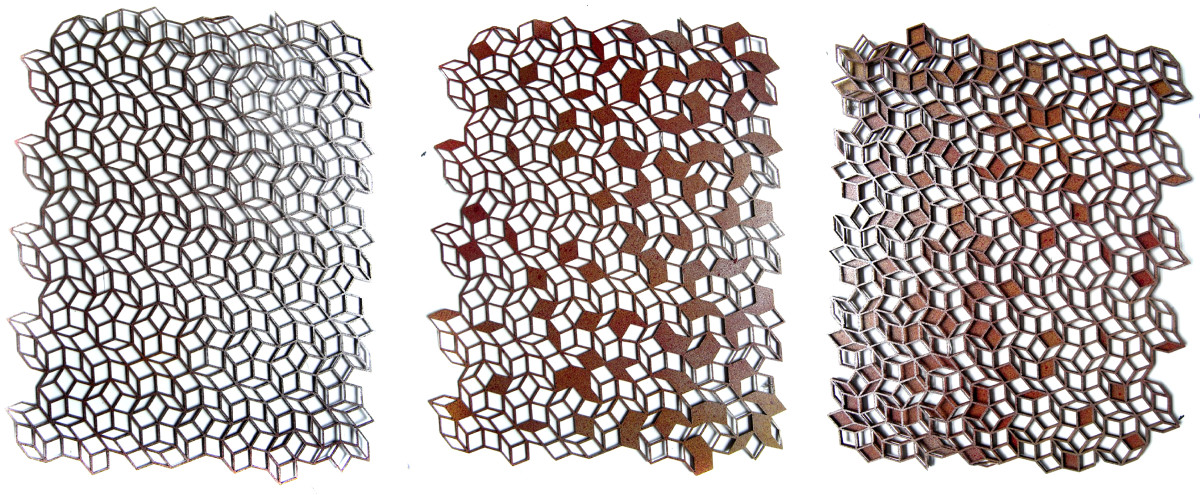
A primary component of the space arrangement is a perforated structure made of steel (Corten) that constitutes a frame for climbing plants. A green wall which became a background for exotic trees in the Orangery is hiding cosy balconies, ‘nests’ of a sort. The entresols hidden among the tree crowns generate an interesting relation between a new architectural layout and plants. Additionally, they create an attractive vantage point on the restaurant interior and due to porte-fenênatre windows on the revitalized garden of The Royal Łazienki Museum. A perforated structure on the orangery wall, a minimalistic interpretation of natural vegetable forms, has become a sort of artistic installation in the space.
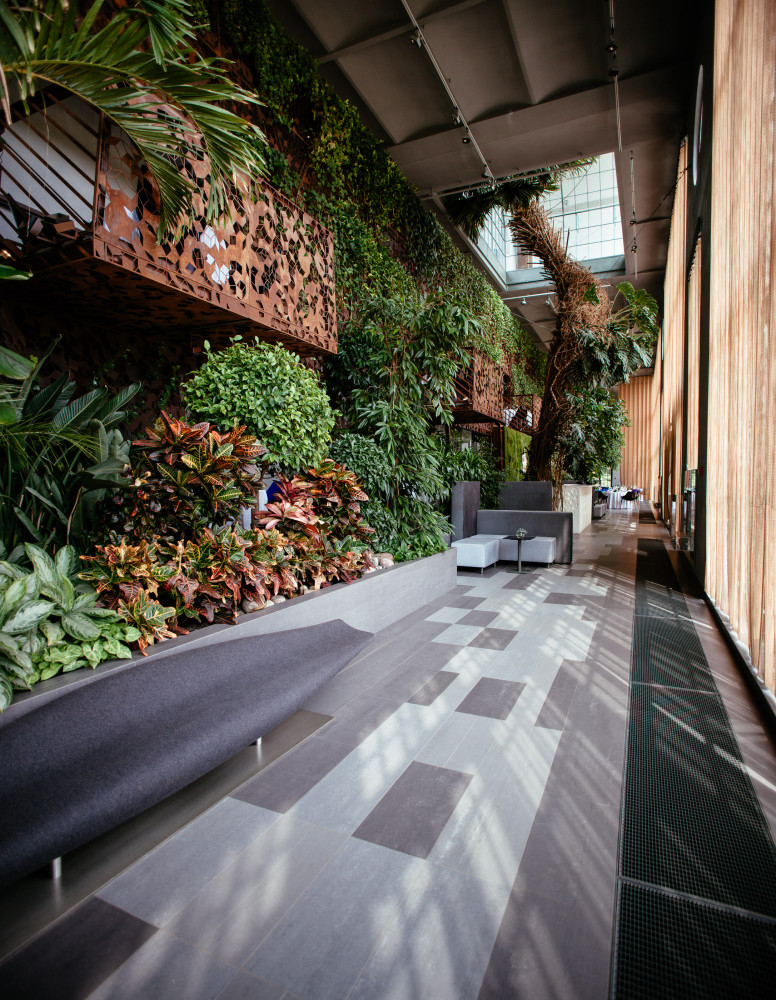
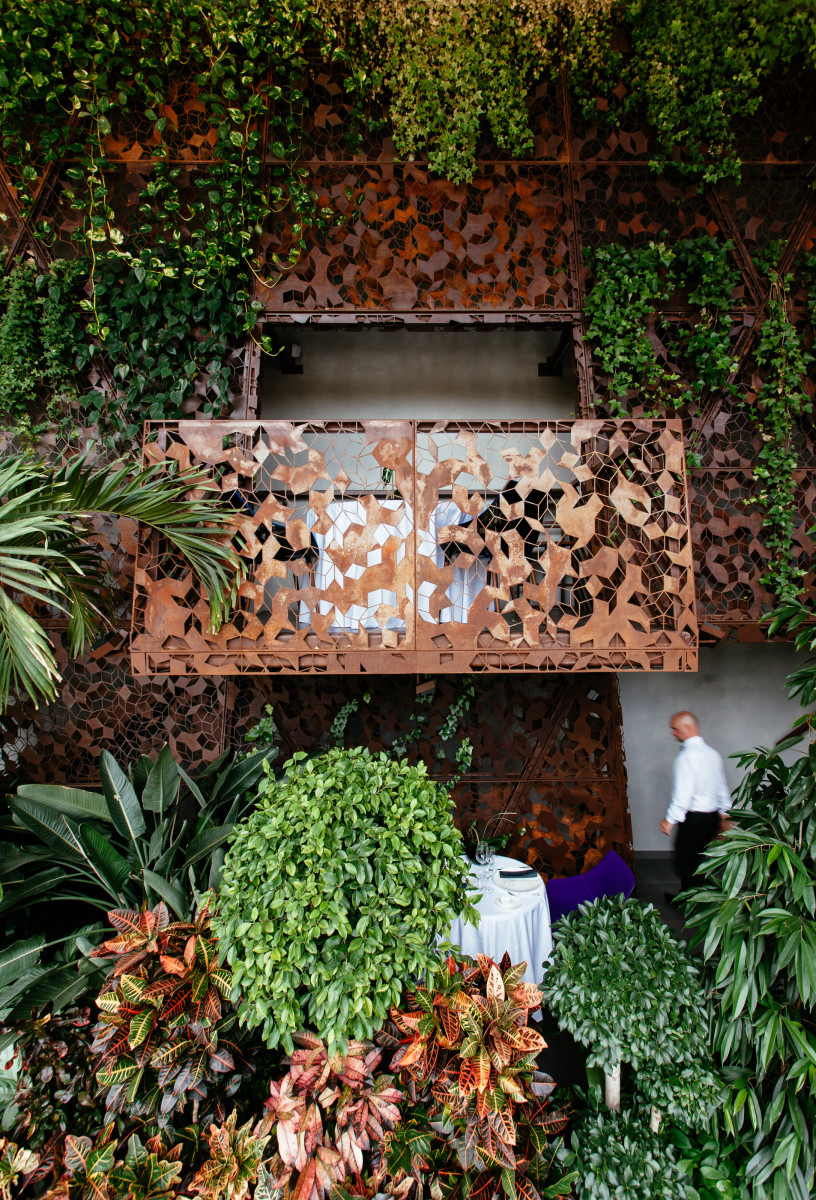
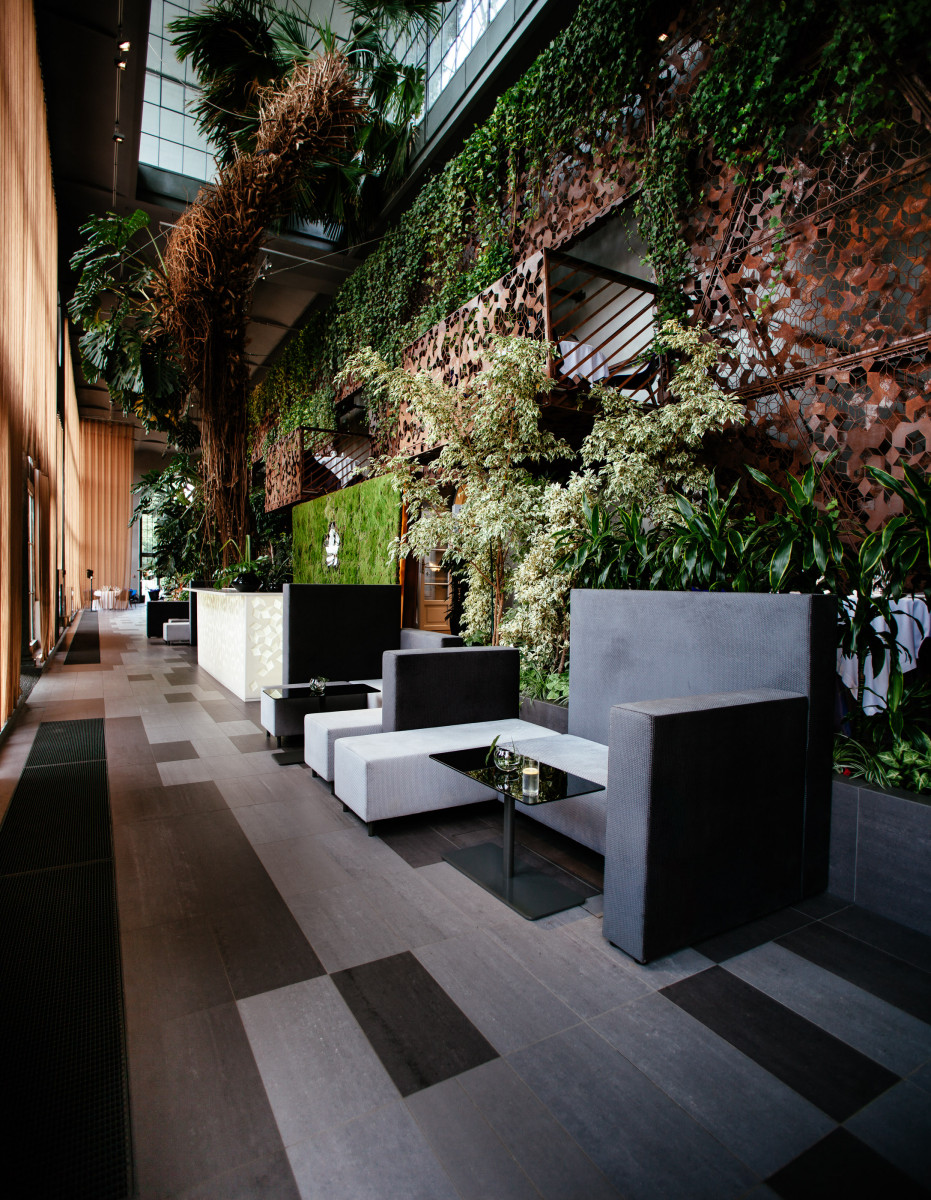
The main space of the orangery is divided into three levels. The first one is a floor level – the main passageway of the interior. The floor is finished in tiles of two various shades of grey imitating a garden path. The second level is created by an elevated platform, rising above floor level by around 50 cm, which makes an integral link with a bar, a cloakroom, toilets and food and beverage facilities.
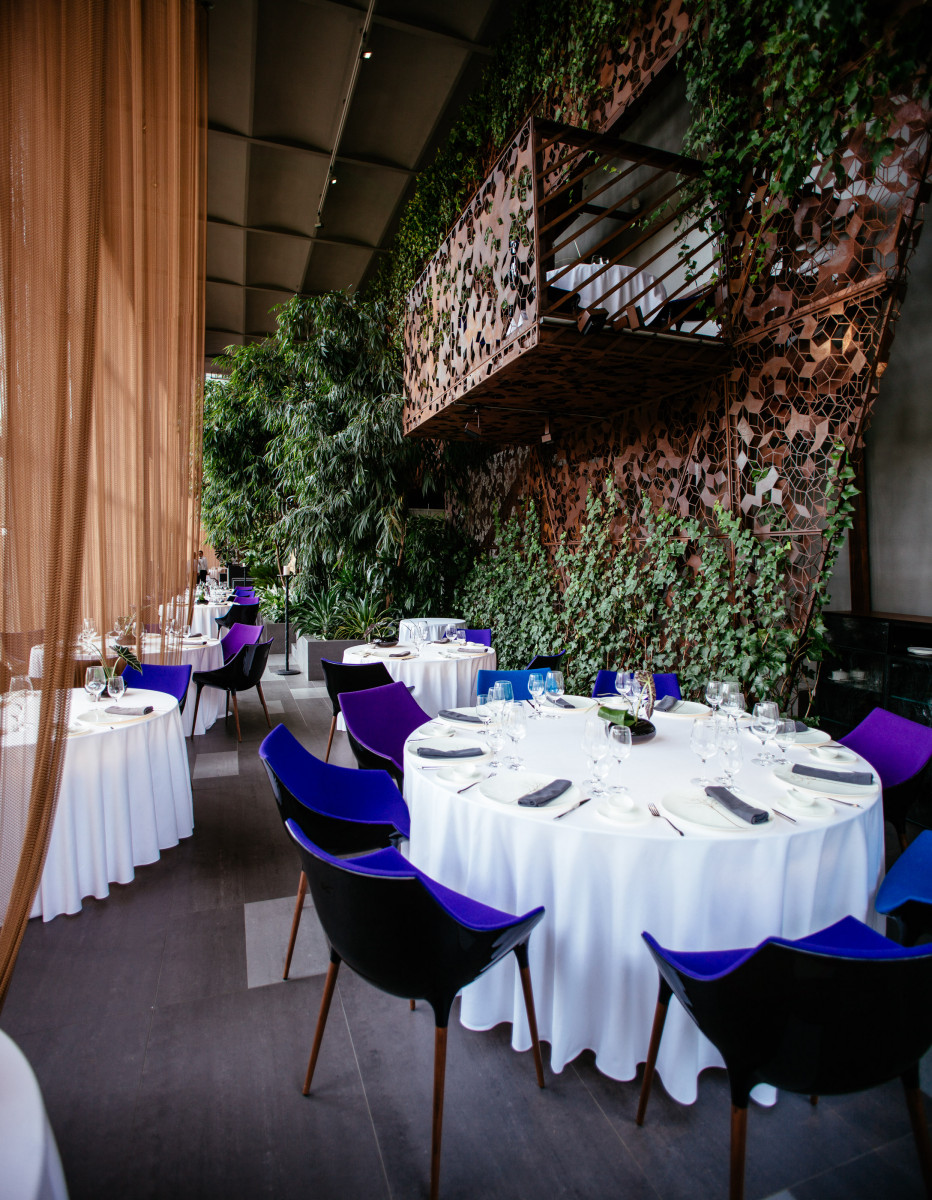
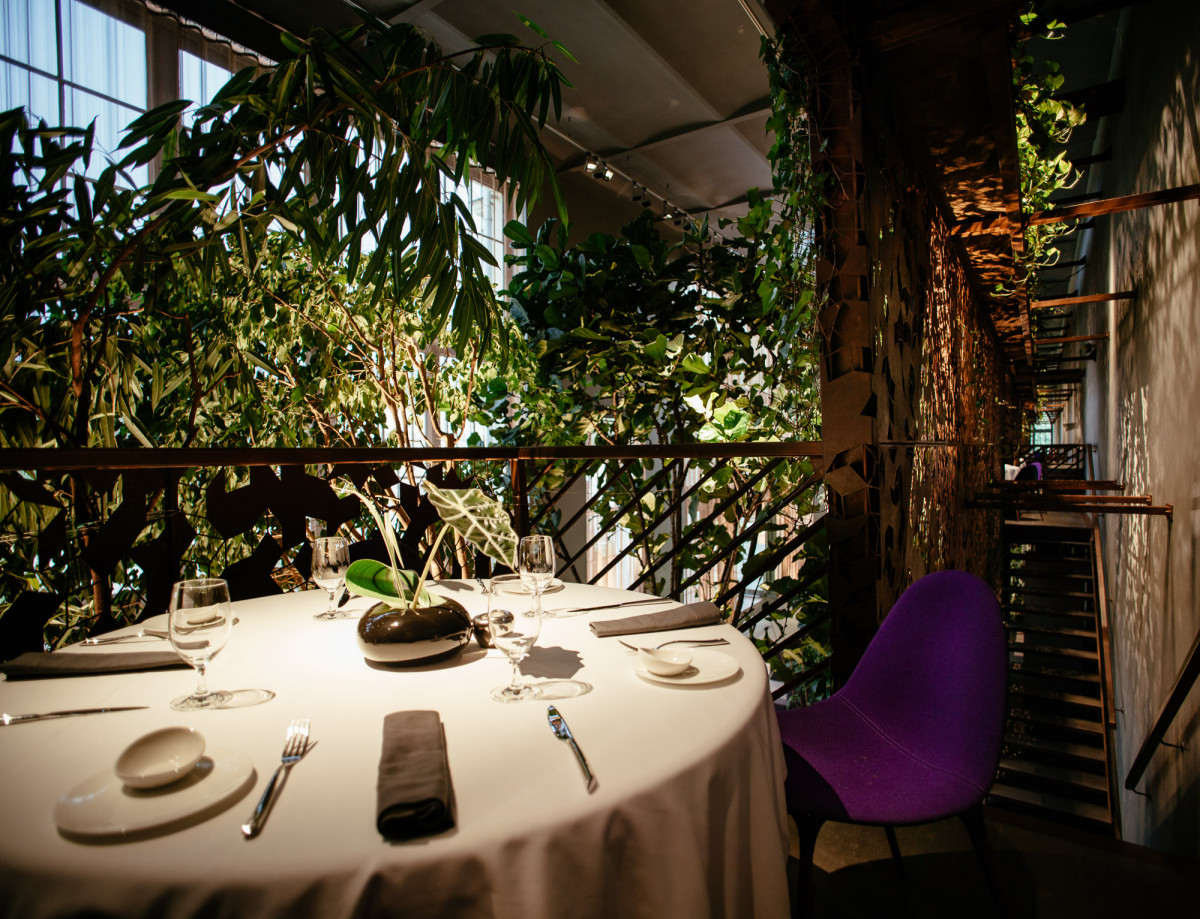
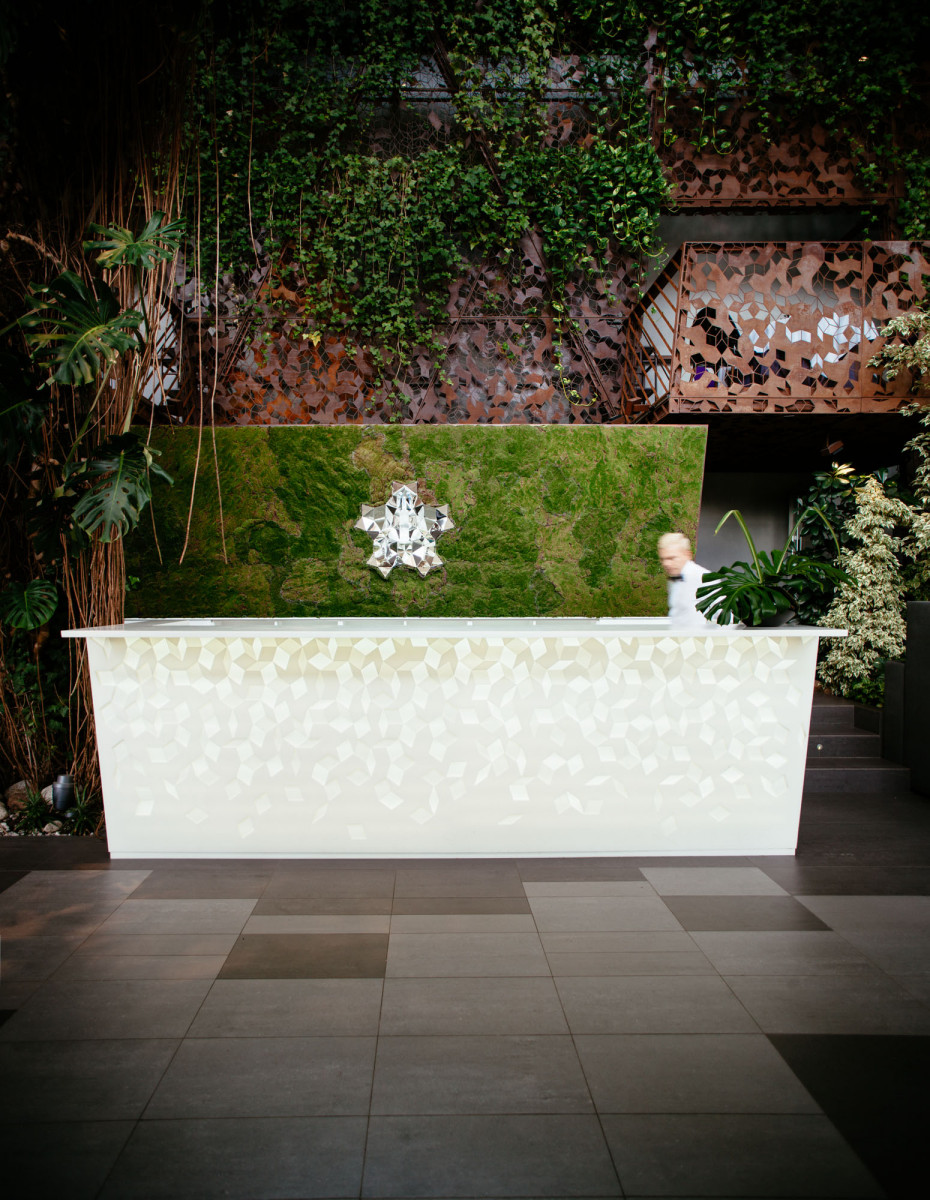
In the middle of the interior there is a bar made of white Corian. A decorative motif of the steel wall structure is replicated on the bar front side. A wall covered with thick moss emerges from behind the bar. A juxtaposition of a white Corian bar, a rusty Corten structure, organic plants and geometric components of the interior create an intriguing sculptural composition.
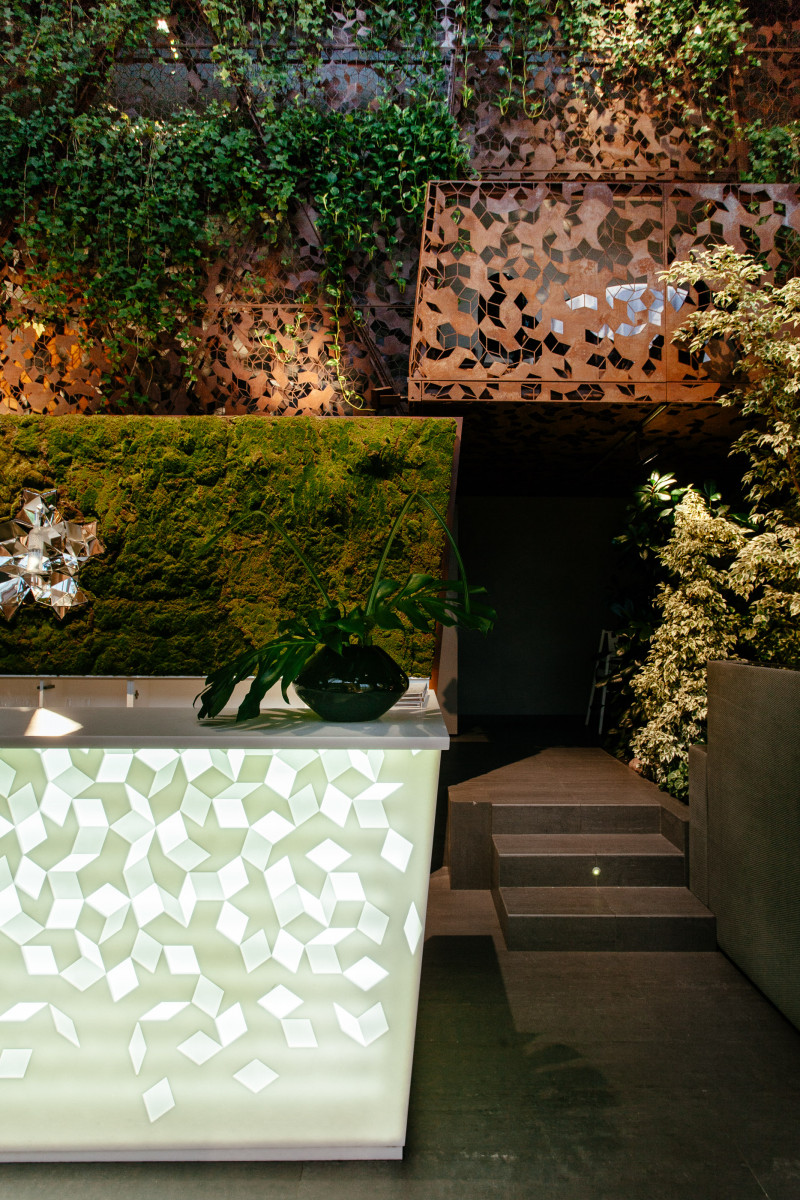
The foyer and cloakroom room space, accessible in winter season, is decorated with huge mirror panes and thin panels of pressed exotic tree bark covering the walls. This solution gave the interior an extraordinary character due to multiplication of reflections of lights and colours of different tree bark. Additionally this geometrically arranged interior makes a delightful contrast with organic elements contained in the space of the Orangery.
